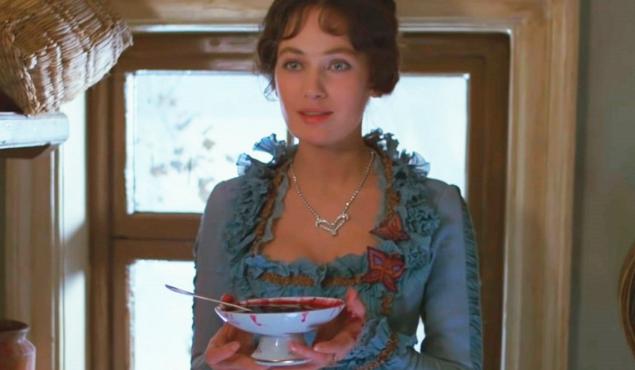150
Thanks to which the children of nobles in emigration achieved dizzying successes
History is a very fascinating science. After all, it is always interesting to compare what is happening with how people lived tens and hundreds of years ago, which was the main thing for them, how they raised children.
And today's edition. "Site" He offers to talk about the life of nobles, a privileged class that was considered the elite of society. Of particular interest is the conditions under which they grew. noblemenWhat they were taught, what values they were trying to instill. And there's something to be surprised about.

First of all, you need to understand that the nobility education did not represent some integral pedagogical system. Rather, it was a tradition to raise a child in such a way that it corresponds as best as possible to a certain ideal. And even if today such an idea is considered outdated, it is still interesting to see how all this was implemented in practice.
Walking in cold weather was the norm. If it is cold outside, and you dressed easily and went for a walk, the nobles considered it not recklessness, but special chic. From an early age, children were hardened with cold so that they had good immunity. Some parents had a tradition to go to the river to swim at sunrise, others had the norm to pour cold water every morning (even in winter). And hardened not only boys, but also girls.
Dance training
Physical strength developed from an early age. In order for the nobleman to feel comfortable in any society, he was taught dancing from 5-6 years old. These lessons were not easy or exciting. Rather, they looked like some kind of soldier's drill. But in the end it gave impressive results, and the movements of the nobleman in the dance were elegant and accurate. Preparing for life's adversity
Especially I want to note how thoroughly prepared for adulthood girls. They were taught to manage and manage money. They even explained how to hide the existence of debts and the financial distress of the future family. Prepared for any life test. Therefore, even in emigration, the children of the nobles achieved success and did not break under the burden of problems. Pregnancy and childbirth were perceived as a normal state of the female body. If health allowed, and the marriage was strong, then having 10 or more children was common. It’s not like today, when even three children are rare.

It is interesting how children were taught courage from an early age. If the child was afraid of something, he was simply forced to look the fear in the eye. This method was radical but effective. And when we look at the literature of that time, we notice that courage and fortitude were the hallmark of the elite of that time.
And today's edition. "Site" He offers to talk about the life of nobles, a privileged class that was considered the elite of society. Of particular interest is the conditions under which they grew. noblemenWhat they were taught, what values they were trying to instill. And there's something to be surprised about.

First of all, you need to understand that the nobility education did not represent some integral pedagogical system. Rather, it was a tradition to raise a child in such a way that it corresponds as best as possible to a certain ideal. And even if today such an idea is considered outdated, it is still interesting to see how all this was implemented in practice.
- The love of parents should have been earned.
There was not much tenderness and warmth in the parent-child relationship. Education was rigorous, and even upsetting the mother or father was considered a great offense. Therefore, even the behavior of a small nobleman should be perfect. Children's rooms were always as far away from the father's office as possible, so that the child did not interfere with the parent to do important things. Often, a son or daughter would have to wait for free time on their father’s schedule just to see and talk to him.
- Early education
Can the current second grader be considered an adult and independent person? Absolutely not. But in the circle of nobles, a 7-year-old child was already considered quite an adult, and therefore the demand from him was appropriate. Such children began to spend more time in the circle of adults, participated in adult conversations, read the same books. Surprisingly, from this age, children of nobles could not play games, as it was considered an unacceptable pastime for an adult.
It is interesting that children from an early age understood orders and other insignia. Therefore, they could easily tell what kind of order hangs on the chest of any of their relatives (even from the portrait). It was fashionable not only to know poems by heart, but also to be able to rhyme on the go.
At the same time, small nobles were taught not to be conceited, but to behave decently in any company. From arrogant and not enough polite turned away not only the surrounding, but also the family. As a result, a person without noble origin, but possessing talent or having outstanding merits, was accepted in high society as an equal, no one tried to hurt him.
Walking in cold weather was the norm. If it is cold outside, and you dressed easily and went for a walk, the nobles considered it not recklessness, but special chic. From an early age, children were hardened with cold so that they had good immunity. Some parents had a tradition to go to the river to swim at sunrise, others had the norm to pour cold water every morning (even in winter). And hardened not only boys, but also girls.

Dance training
Physical strength developed from an early age. In order for the nobleman to feel comfortable in any society, he was taught dancing from 5-6 years old. These lessons were not easy or exciting. Rather, they looked like some kind of soldier's drill. But in the end it gave impressive results, and the movements of the nobleman in the dance were elegant and accurate. Preparing for life's adversity
Especially I want to note how thoroughly prepared for adulthood girls. They were taught to manage and manage money. They even explained how to hide the existence of debts and the financial distress of the future family. Prepared for any life test. Therefore, even in emigration, the children of the nobles achieved success and did not break under the burden of problems. Pregnancy and childbirth were perceived as a normal state of the female body. If health allowed, and the marriage was strong, then having 10 or more children was common. It’s not like today, when even three children are rare.

It is interesting how children were taught courage from an early age. If the child was afraid of something, he was simply forced to look the fear in the eye. This method was radical but effective. And when we look at the literature of that time, we notice that courage and fortitude were the hallmark of the elite of that time.
Why you can not eat khinkali with a knife and fork
I asked the peach merchant how to find the ripest ones in a second.


























